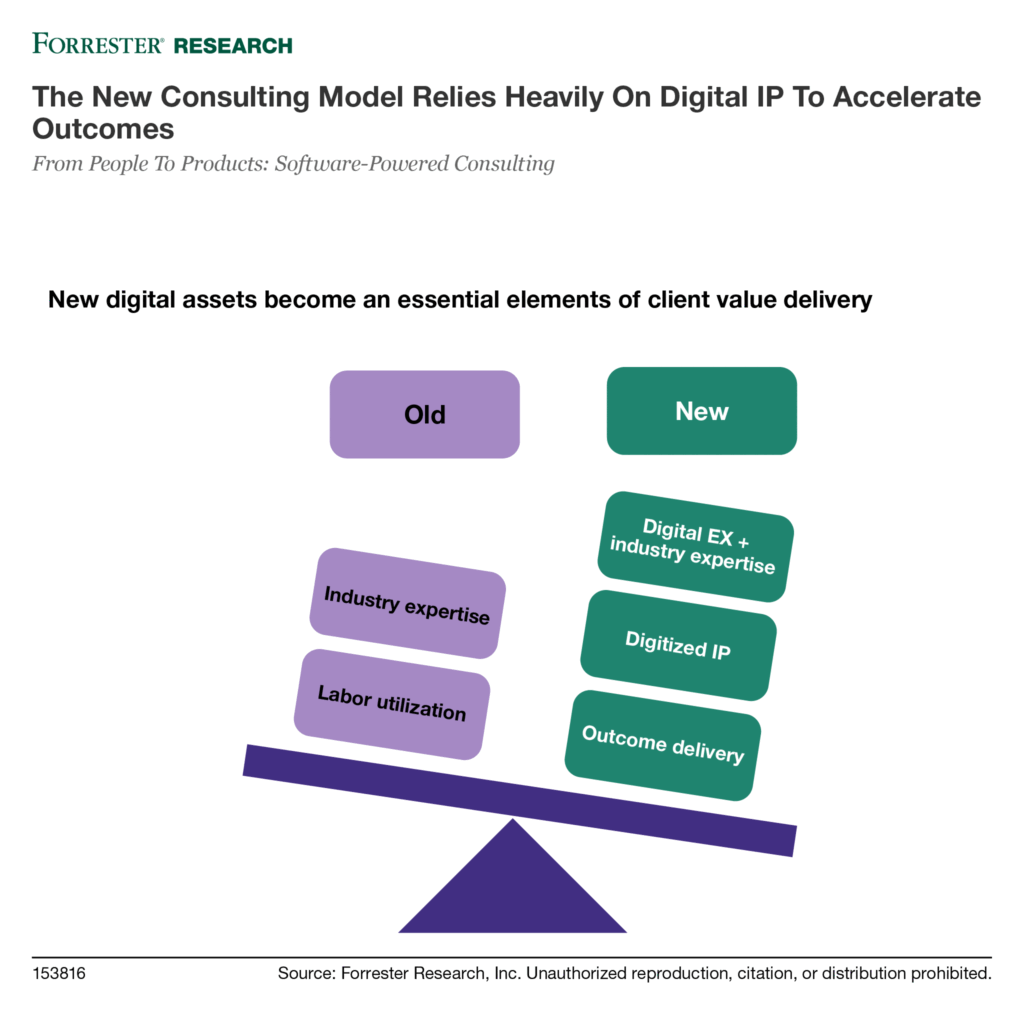Software-Powered Consulting Services
As firms mature their digital capabilities, digital executives move beyond simply adding digital bolt-ons to the existing business model. These leaders use new technology capabilities to change the business model and drive new revenue growth. This is where the real digital transformation begins.
Advanced firms use software products and services as a driver of revenue growth. Pioneer added new Granular data services for farmers to increase yield. Pilot Flying J used new digital services for truckers to minimize wait times for pumps. These firms, and other examples of advanced digital transformation, are learning to use technology to improve the outcomes their customers value most.
To help drive these changes, advanced firms also leverage an ecosystem of services partners. Our latest Forrester Analytics Business Technographics® data shows that digitally advanced firms report higher success rates when partnering with services firms than less advanced firms. These advanced firms understand the need to drive fast changes, and they have spent years redesigning their operational teams to allow them to move quickly. Speed is now the No. 1 selection criterion for selecting a services vendor.
At the same time, the digital business services industry is undergoing its own digital transformation as firms learn to develop and leverage software assets to deliver client value. Firms such as Accenture, Deloitte, and McKinsey have been acquiring smaller firms for years. Some were acquired because of their digital assets, allowing the acquiring firm to license the assets to clients directly or embed them into larger services contracts.
Services firms are also developing proprietary software tools and digital products designed to reduce the time to business impact (T2BI). By applying these tools, services vendors can deliver outcomes faster and do more with fewer specialists.
But these new software capabilities change the way that buyers must assess their services partners. That’s why, starting with the digital business transformation accelerators research in 2019, I’ve been shining a light on some of the assets vendors have brought to clients, and I’m continuing to explore hundreds of accelerator assets in 2020.

As the software-powered services market evolves, we can expect more firms to pitch their assets as a key component of value delivery. But buyers should beware; not all vendors design and build software assets to be robust digital products. Understanding who will maintain assets after the vendor leaves (or even if you will still have access to the assets) is critical to evaluating vendor proposals. Vendors may even embed assets into a bigger services contract in the hopes that their software won’t come under the scrutiny of IT procurement.
For a deeper dive into software-powered consulting, check out my latest report: “From People To Products: Software-Powered Consulting”